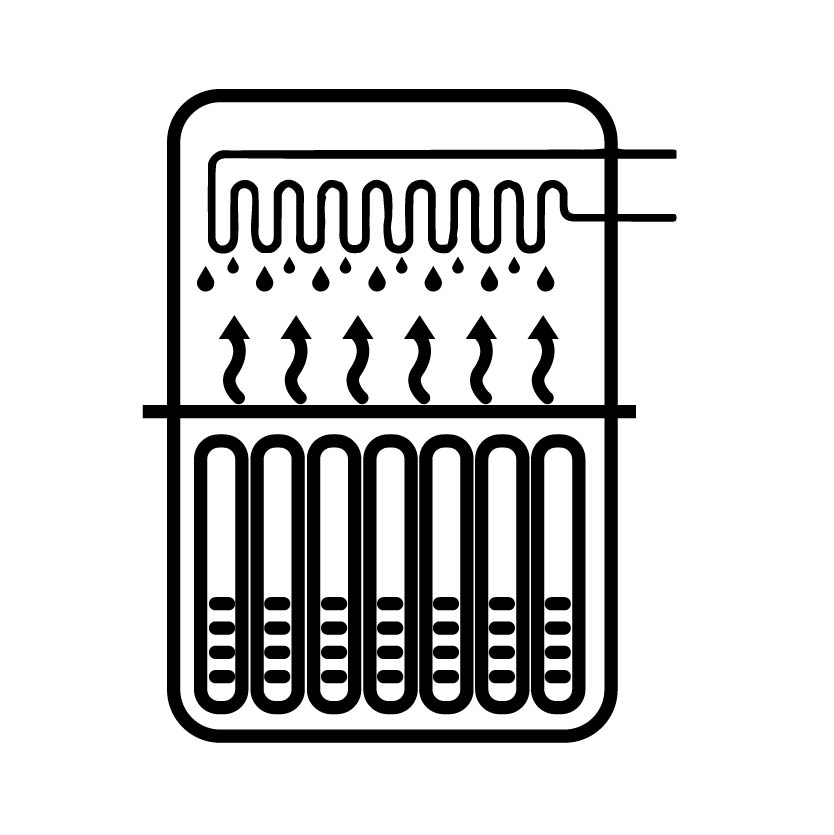
|
Immersion cooling involves immersing system components, such as a motherboard or an entire computer system, in a fluid which, ideally, has a high coefficient of heat rejection and low thermal resistance. These fluids need to be “dielectric” meaning that they do not conduct electricity. Because immersion cooling is more energy- and space-efficient, interest in the technology has steadily grown over the years, and the technology itself has evolved considerably.
Heat pipe energy recovery modules provide a passive cooling effect to reduce loads and downsize the mechanical cooling system in indirect cooling applications, whether chilled water or direct expansion. As air passes over the warm side (hot air aisle from data centre return air) of the heat pipe, the refrigerant vaporises, absorbing energy, then travels to the cold side (outside air) where it condenses, releasing energy, then flows back to the warm side.
 |
Waterside: 1/COP_CHPRE * QBLDGPRE * OPHRPRE,yr – 1/COP_ACPOST * QBLDGPOST * OPHRPOST,yr)
Where QBLDGPRE = (NCHMAX* Qe_CHR + NCHMIN * Qe_CHR)*0.45
QBLDGPOST = kW_IT*LFIT
Airside: kW_AHU*NAHU*LFAHU*OPHRPRE – kW_CRAC*NCRAC*LFCRAC*OPHRPOST
Please click HERE to view the list of terminology.
|



